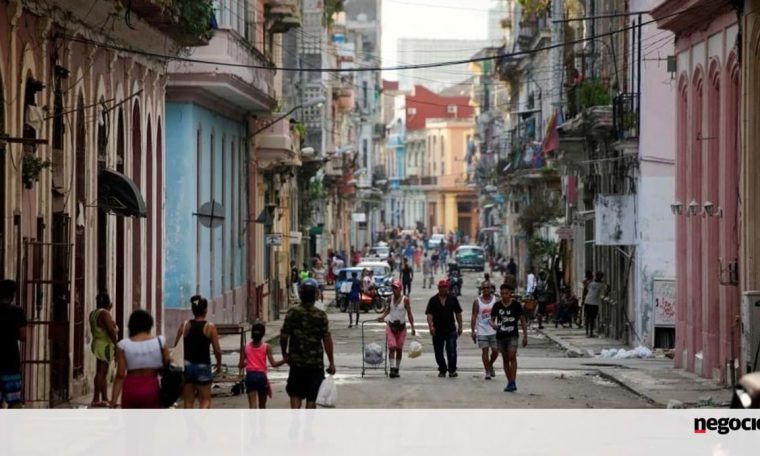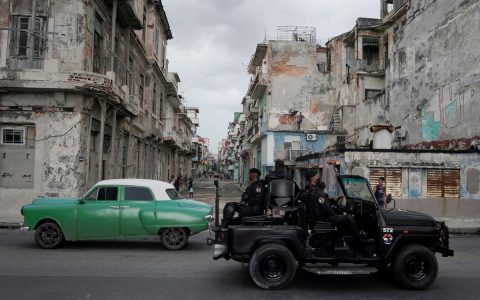
This Monday, Cuba reopened the doors to foreign tourism, seeking to boost the economy, facing the biggest crisis in three decades due to the effects of the pandemic, tightening US sanctions and ineffective management.
The long-awaited reopening coincides with the commemoration of the capital Havana’s 502nd anniversary, with calls for a return to 1st cycle classes and a civil protest march by the Archipelago Forum trying to change the political landscape on the island.
The process of easing the most restrictive measures in the country, within the scope of the new coronavirus pandemic, was implemented by the authorities responsible for the mass vaccination program against COVID-19, which is predicted to vaccinate 90% of the Cuban population. does. end of month.
With a continuing trend of reduction in infections and deaths due to Covid-19 following a strong outbreak since the beginning of the year, the country has, in recent weeks, started a large proportion of public transport services, hotels, gastronomy, cultural activities has started again. and rent of residences of private persons. Apart from this, students are progressively resuming classes.
Cuba reopened its borders on Monday with the easing of measures set in place for the most complex epidemiological scenario of the pandemic and aimed at reversing the decline in the tourism sector, another source of foreign exchange for its battered economy.
As of Monday, all travelers who have received a vaccine recognized by the health authorities of their country of origin and are under the age of 12 will be able to enter the country without testing negative or undergoing quarantine.
Unvaccinated travelers must undergo a negative PCR test or antigen test from a certified laboratory in the country of origin within 72 hours of arrival in Cuba.
According to Cuban health officials, if a traveler displays “signs and symptoms of COVID-19 or any other communicable disease”, he or she will be sent to a health institution for diagnosis.
Sanitary measures to re-open exempt children under 12 years of age from vaccination test or PCR test on arrival, regardless of nationality.
Temperature measurement of all passengers entering and leaving the country, mandatory use of masks and hand sanitizers, as well as submission of COVID-19 medical insurance remain in force.
At the same time, and according to estimates by the Ministry of Transport, a gradual increase in air operations at the island’s 10 international airports is expected, going from the current 63 weekly flights to 400 at the end of the month.
In the immediate term, 147 flights are expected from the United States to various cities in Cuba, where the largest community of Cuban expatriates live abroad, and a total of 77 will be destined for Jose Martí International Airport in Havana.
The archipelago’s maritime borders are also set to rehabilitate their terminals to resume the arrival of cruises in December.
In April 2020, the country, after reopening airports in October, suspended commercial and charter flights to halt the progress of the new coronavirus, but with a severe reduction in flights, to the United States, Mexico, Panama, Limited to Bahamas, Haiti. Dominican Republic and Colombia.
Cuban officials expect more than 100,000 foreign tourists to arrive by the end of the year.
Before the arrival of COVID in Cuba in March 2020, tourism represented 10% of Cuba’s gross domestic product (GDP) and was second in importance to the economy, just after professional services.
Estimated to receive around 4.5 million foreign visitors in 2020 and reversing the 9.3% drop seen in 2019, when 4.2 million tourists arrived in the country, disappeared with the pandemic. In the first half of 2021, only 114,460 foreign tourists visited Cuba, a decrease of 88% compared to the same period last year.
In this last phase, Russian tourism was the most frequent, followed by Cubans, Germans, Spanish and Canadians living in other countries.
The contraction of the area over the past year and a half has been used to recover and remodel facilities and to build new hotels in Havana and in the eastern provinces of Holguín and Varadero, Cuba’s main sun and beach destinations. has been done.
Thus, four thousand upon reopening offer 70 thousand beds in hotels and the government plans that by 2030 the island will have more than 103 thousand beds.



